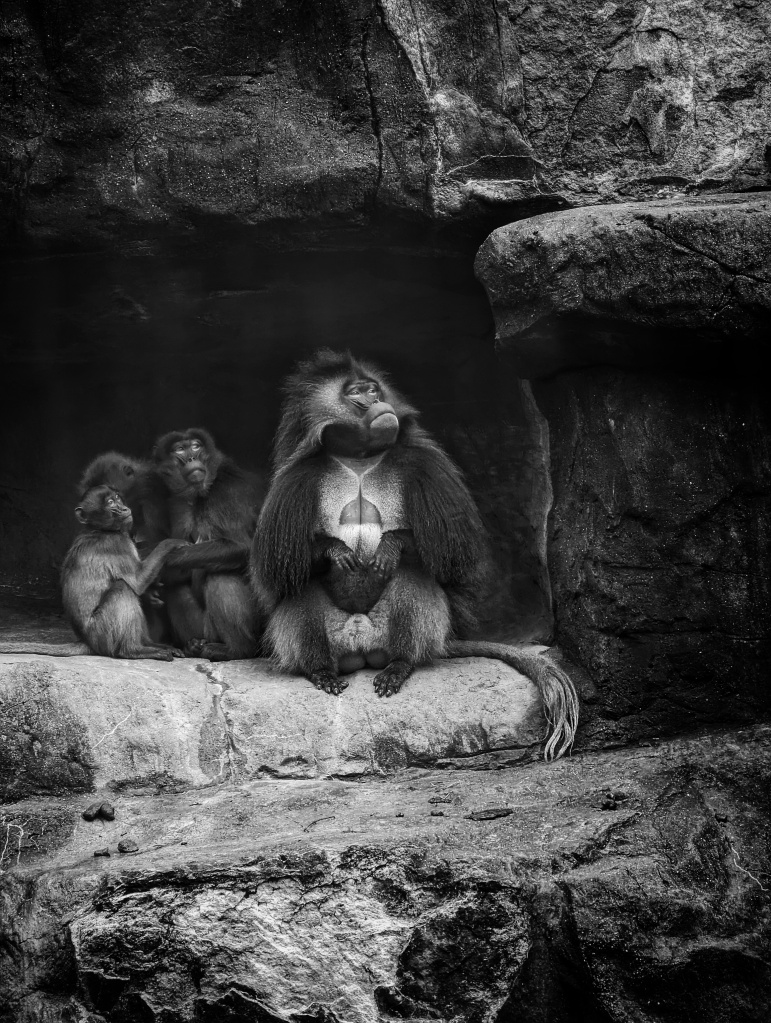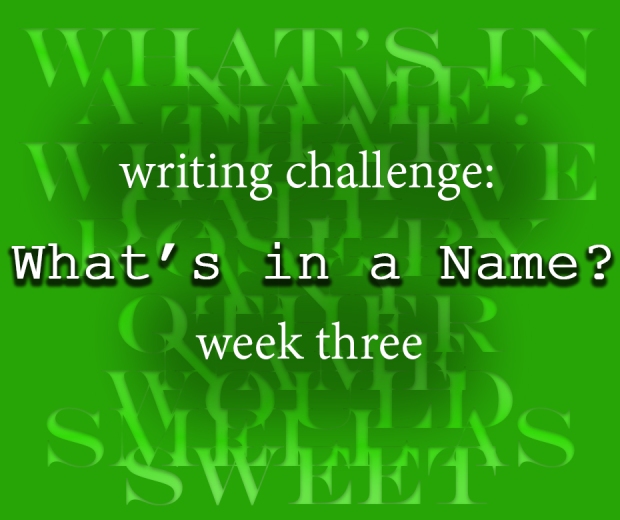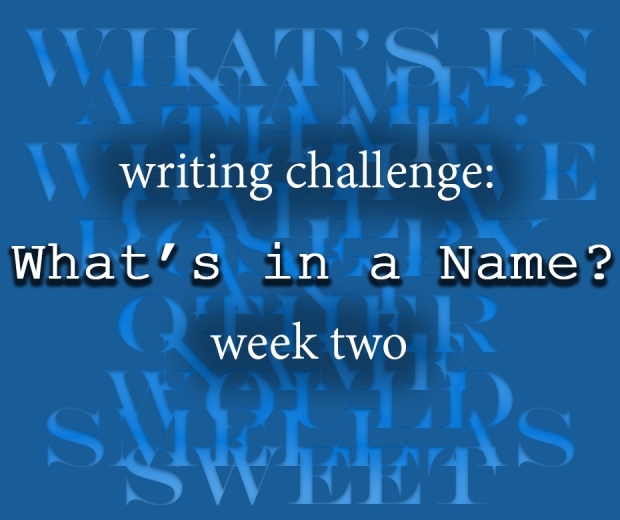INTRODUCTION
We have reached our final What’s In A Name Challenge. So far, the goal has been to not challenge character tropes or fight against typical naming conventions for certain character types. This time, we are doing just that. The important thing to remember in this challenge is reader perception. Readers all connect to characters differently. If we challenge a common naming perception, we as the author have to make the reader believe that it works.
Villains are an easy way to look at challenging naming tropes and conventions. We all know that Darth Vader, Voldemort, Darken Rahl, Hannibal Lecter, Hans Gruber, and Cruella De Vil are villains. They are all popular villains, and you probably know most of them, if not all. But the point is not to just know who the villains are by their fame. If we look at their names, they scream “bad-guy.” One prominent naming convention in villain names is death and darkness. Look at Darth Vader (dark father), Darken Rahl (darken), and Voldemort (flight from death).
Hannibal Lecter is a little harder to dissect. However, Hannibal does rhyme with cannibal. It is also the name of a Carthaginian general from Roman times. The name’s history doesn’t necessarily have a dark connotation, so we have to rely more on the way the name sounds. Hannibal itself is a strange name, and in this case it does benefit from the infamy of the character. Lecter is sharper and more harsh. When you put the two names together the compliment one another off the tongue. It could be surmised, in this case, that the strange name benefits his character, especially in comparison from the other characters Clarice Starling and Will Graham.
In most cases, the name should compliment the character. It is possible to challenge that ideal, assuming every reader carries the same expectations for the names of villains and characters. In that case, the writer has to make the reader believe that the name fits the character if the name is unconventional.
In this challenge, we are going to challenge naming tropes. If you write a villain character, maybe his name won’t be quite so villainous. The catch is, you have to make the reader believe it. Same goes if you write a non-villainous character with a villainous name. Your success in this will probably come down more to reader perception than any of the other challenges we have done. Some people might hate a villain named Queen Julia, while others might thing it is awesome that she doesn’t have an evil name like Ravenna (note the inclusion of raven in the name).
Let’s look at two more examples before we get into the challenge.
In Bound by Duty by Stormy Smith, the main characters are as follows: Amelia, Aiden, Micah, and Julia. If I hadn’t mentioned villain Queen Julia above, which name would have stood out to you as the potential villain? Can you pick one? Or are there none you would see in that role? In this story, we don’t get to learn a lot about the villain (to my recollection) but she could have a history or her own story that gives her stock as a Julia. Maybe she wasn’t always evil. For me, as a reader, I had a hard time getting behind evil Queen Julia, though I did quite enjoy the series regardless. You would have to read the book yourself to see what you think, but that is where reader perception comes into it. Where I had a hard time with the name, another reader might not think twice about it.
In The Sword of Truth: Wizard’s First Rule by Terry Goodkind, we have a wide array of character names, three of the main ones being Richard, Kahlan and Zeddicus. In a Reddit AMA, a reader asked Terry Goodkind how he chose Richard as his main character when so many of his names are so unique. Terry Goodkind replied, “Specifically because it was fairly common and I’ve always loathed fantasy names that unpronounceable. I hate stumbling over names repeatedly through-out books. I wanted a name that would be memorable for its simplicity and commonality.” (source)
Terry Goodkind challenged a naming pit-fall of high fantasy: names that are hard to pronounce and potentially pull the reader out of the story as they stumble over it. If I were to say, I just read a book about a guy named Richard, you probably wouldn’t jump to fantasy. It is a very common name. However, he does give Richard a last name that makes it more interesting, and potentially more fantasy – Richard Cypher. Having such a unique last name does help Richard move more easily into the fantasy genre. The first and last name flow well together and create a more memorable character than just another Richard. However, some readers may still have a hard time accepting Richard as the hero in a high fantasy when he is surrounded by characters with much more unique and even melodic names.
THE EXERCISE
This is a two part challenge.
Part 1:
We are going to revisit the lists that we have used for information over the last couple of weeks (listed below). For this challenge, we will pick a trope, a name, and a location, and write one piece of flash fiction where the name might not match up to the character it portrays. We are challenging the naming conventions with this. If you want a villain named Princess Flower, you have to SELL it to the reader.
- Movie Star
- Jock/Cheerleader
- Evil villain
- Gallant Hero
- Romantic
- Nerd
- Uneducated/Hillbilly
- Emo Kid
- Loner
- Boy/Girl Next Door
- Damsel in Distress
- Mad Scientist
- Village Idiot
- Swashbuckler
- Artist
_
- Caesar Frayne
- Jane Anderson
- Ron Evans
- Garron Amos
- Victor Reyes
- Lillian Cross
- Poliquin Vane
- Sarah Francis
- Paul Marcus
- Davion Meadows
- Wilmer Kaine
- Emmaline Cooper
- Andrea Sullivan
- Charles Hall
- (or, use one of the methods from Challenge 2 to make up your own character name)
_
- An orchard
- A lighthouse
- A castle tower or castle dungeon
- A slaughterhouse
- An attic
- An underground storm shelter or apocalypse bunker
- A high school prom
- A hair salon
- A used car dealership
- A fishing boat
- A hotel room
- A condemned apartment building
- A Vegas stage show
- A cemetery
Part 2:
Let’s take a quick recap of some of the characters we have come up with over the last couple of weeks.
- Mr. Whiskers, AKA Silverstreak, a gallant hero (who is a cat)
- Charles Hall, butcher and aspiring author
- Lady Amelia Rothburg, damsel in distress
- Sarah Francis, a reporter trapped in a storm shelter.
- Wilmer Kaine, retired agent with a dark past.
- Poliquin Vane, a silky, imprisoned thief
- Ron, the used car salesman, or the man on the hunt for a used car to buy
- Niven, the damsel in distress.
- Vance Walker, the movie star
- Dylan Osbert, the swashbuckler
- Lillian Cross, novelist
- Caeser Frayne, ghost reverend who greets the dead
- Percival Blake, a construction worker hearing voices
- Rose, the romantic.
I would say these names are all pretty fitting for the characters they portrayed in each flash fiction piece. Now, pick one of the characters above (either one of your own or someone else’s) and drop him/her into a new scene (chosen from the list from Part 1) that contradicts the original character’s perceived story. Write a scene that makes the reader trust this name as a character in a scene where the perception of the name might not naturally fit.
As you read each participants posts and comment, take the following questions into consideration :
- Did you believe the character fit in the situation they were in, if you take their name into consideration?
- What was your perception of the name chosen, and were you able to look over that to see the new story?
- We should all still be utilizing the things we learned during the POV challenge, so make sure voice any observations you have on whole as well, not just the name.












